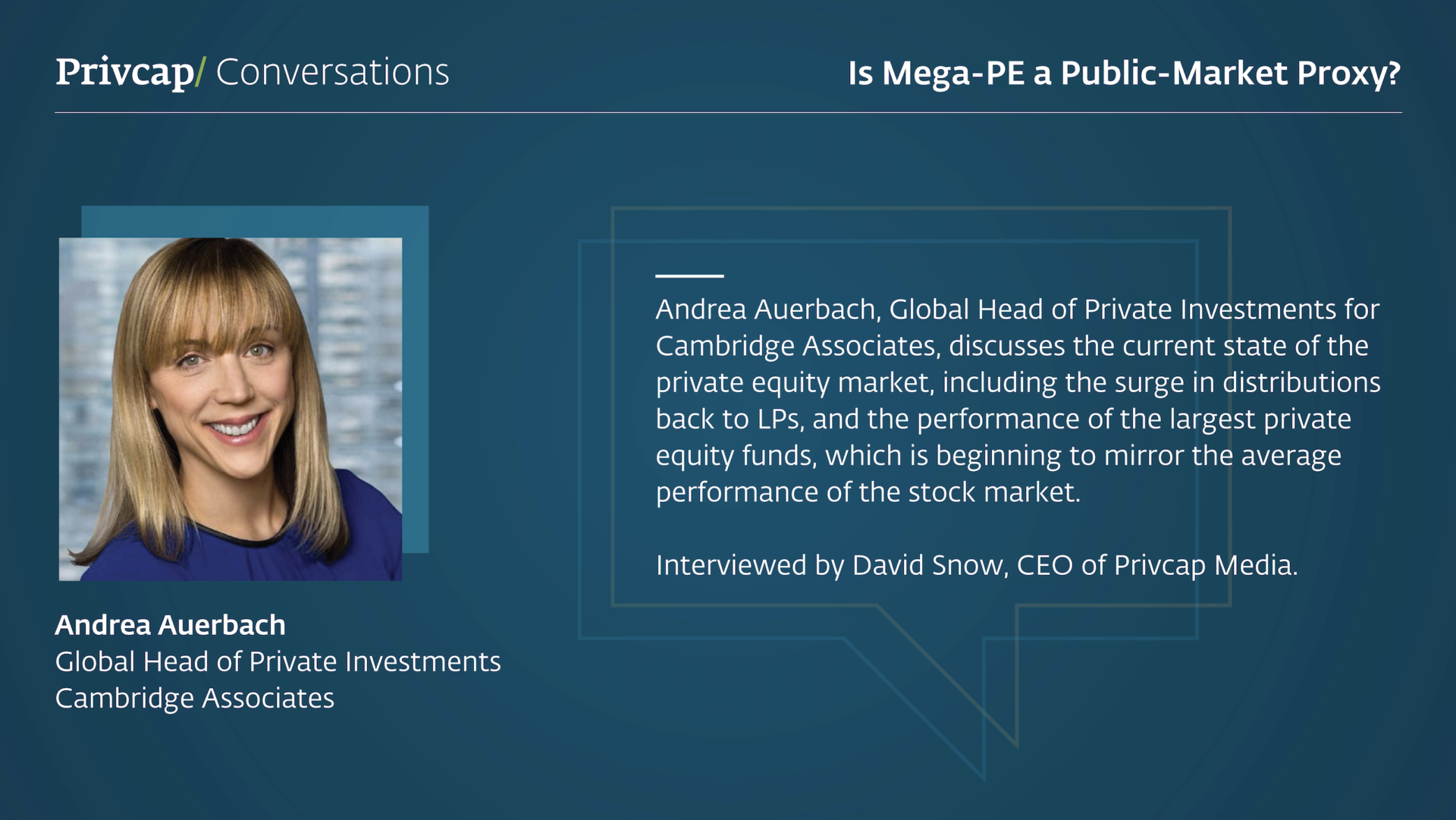How to Effectively Benchmark PE Performance
Three experts discuss how private equity investors use—and should use—benchmarking against a public alternative to assess their investment programs
It’s easy for private equity investors to look at public markets and judge the performance of their own portfolios against those returns. But how much do private investors and managers really care about the performance of their public market equivalents (PMEs) in assessing their own investments?
The Riverside Company’s global head of fundraising and IR, Erick Bronner, says investors expect private equity investments to outperform public equity indices as compensation for the asset class’s illiquidity.
On top of that, the investors’ motivation for putting money into private equity will come into play when they are deciding whether to invest in a fund, as will the relative performance of similar funds.
However, Bronner says that when Riverside is raising a fund, potential investors are often more interested in the firm’s strategy and how its vehicles have performed relative to its peers. Bench marking against PMEs comes into play more when investors are making their overall asset allocations, he says. John Clark, a managing director at Performance Equity Management, says investors are always going to benchmark an investment against its PME, while also comparing a GP’s fund performance to its peers. Bench- marking against PMEs is particularly useful when used in retrospect, he says. “People use [benchmarking] in different ways, but why not take advantage of all the tools you have to try to understand your portfolio better, understand the decisions you made? Look at how certain pieces of the portfolio work in certain cycles in the economy, and really take all that information, even if it is historical.”
Long-Term Champion
While private equity has underperformed compared to the public markets during the past five years–in the longer term, specifically for time horizons longer than 10 years–PE has, on average, consistently outperformed public mar- ket indices by more than 500 basis points.
 Based on end-to-end pooled net returns compared to Cambridge Associates Modified Public Market Equivalent (mPME) indices. Data as of March 31, 2014. Source: Cambridge Associates
Based on end-to-end pooled net returns compared to Cambridge Associates Modified Public Market Equivalent (mPME) indices. Data as of March 31, 2014. Source: Cambridge Associates-
Cambridge Associates’ managing di- rector and head of U.S. private equity research, Andrea Auerbach, agrees that benchmarking against a PME is “probably most broadly applied in hindsight” and says it is not of use when predicting future performance.
When benchmarking against a PME in the long term, Clark says, a PE fund should always beat its public compet- itor by 400 to 500 basis points.
Auerbach says an individual investor’s illiquidity premium can be anything from zero up. “If you can afford to have massive illiquidity in your port- folio, then your premium could be quite incremental,” she says. “Each institutional investor that we work with may have very different capital requirements and the constitution to withstand illiquidity. One client may not consider adding a premium and just want that absolute return. Others are looking for more of a clear, rela- tive benchmark to help guide them as their portfolios mature.”
Three experts discuss how private equity investors use—and should use—benchmarking against a public alternative to assess their investment programs




